Growing String of Bananas Plant: How to Care Guide
If you’re a fan of trailing succulents, you will love owning a string of bananas plant (senecio radicans). This beautiful succulent has a unique look and features banana-shaped leaves, hence its name!
While String of Pearls gets most of the attention in the trailing succulents category, it’s not the only one you should consider adding to your plant collection.
String of Bananas is just as stunning and can be grown both indoors and outdoors, which is great news for people with little to no outdoor space!
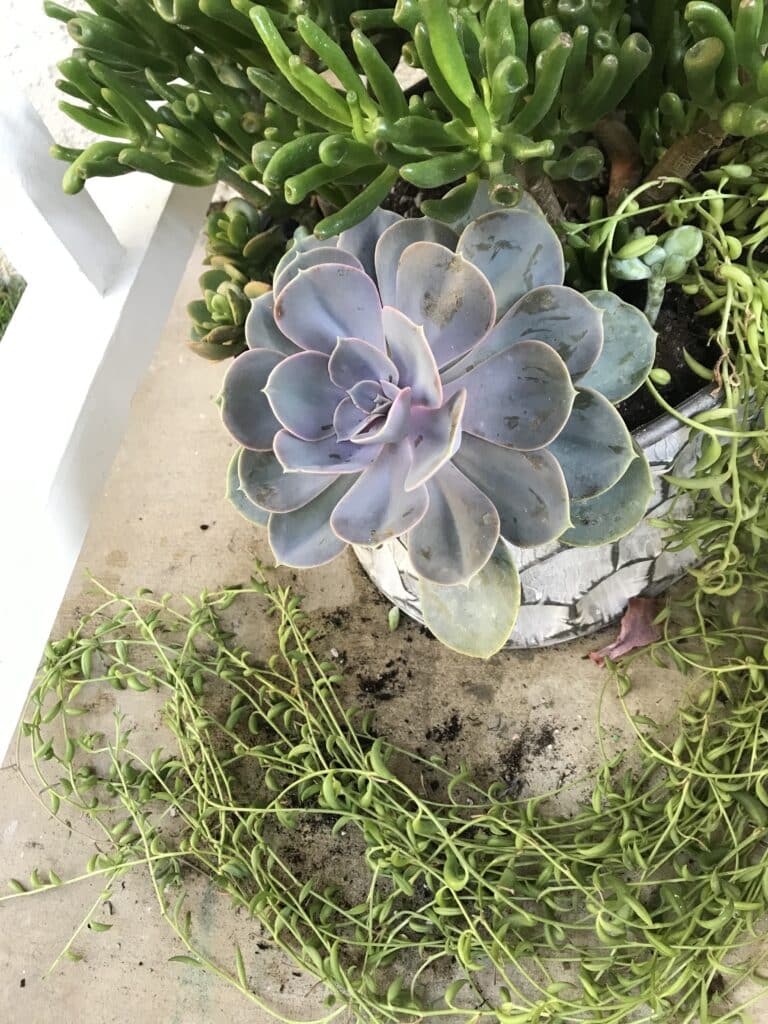
It’s also perfect for growing in a hanging basket inside your home, or on top of a desk, bookshelf, or counter where its vines can cascade down and serve as a decorative focal point.
This plant can be grown outdoors in certain conditions, too. Personally, I love planting string of bananas in a pot alongside shorter, smaller succulents like the Echeveria because they complement each other so well.
If you follow the “thriller, spiller, and filler” design rule when potting up your planters, then consider string of bananas the perfect spiller plant!
In this post, we’re going to cover everything you need to know about string of bananas plant care so that you can feel confident caring for your new plant!
String of Teardrops String of Bananas String of Pearls
Sunlight Needs for String of Bananas
Succulent plants thrive in full sun and most of them perform best when grow outdoors for this reason. String of bananas should get about 6 hours of sunlight each day.
If being grown indoors, you should aim to give it as much direct sunlight as possible. This plant loves bright light and can grow vigorously this way.
While it can survive in lower light conditions, it won’t grow as quickly and won’t look as vibrant. If you want to grow a fuller plant, you’ll need to give it lots of sunshine.
Give it enough light and watch it thrive!
You can use a grow light if your house does not have a sunny window that provides enough sunlight.
One thing you should keep in mind is this: if you’re growing your plant outdoors, you’ll have to be diligent with its care during the summer months.
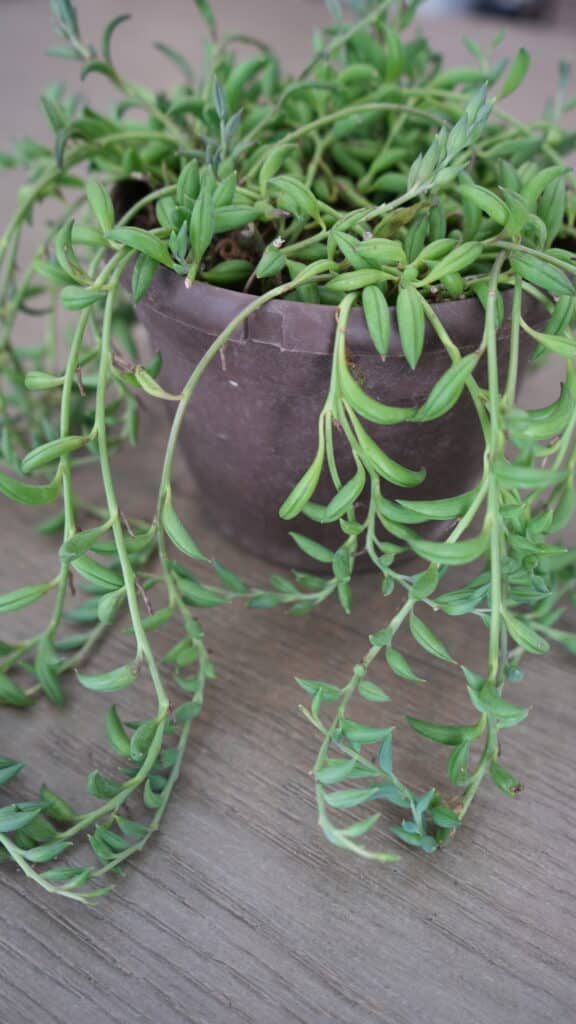
Many areas are now plagued with several heat waves throughout the summer and temperatures can reach as high as 115 degrees. This can be problematic for succulents, especially string succulents, which can sunburn easily.
If temperatures reach above 90 degrees in your area, you can help your string of bananas plant cope with the heat by doing the following:
- move the plant to a spot that provides shade in the afternoon. Indirect sunlight and partial shade is best on very hot days. If you can’t move the pot, try to cover the plant with shade cloth.
- water the soil generously in the morning so the soil stays moist throughout the day. Dry soil during a heatwave can scorch the roots and threaten the health of the plant!
Doing these two things will go a long way in helping your plant survive and thrive through heat waves.
Best Soil for String of Bananas Succulents
The type of soil you use for succulents is very important to the future health of your plants. String of bananas does best in well-draining soil, just as other succulents do.
You can find this soil at your local garden center, and it’s usually labeled as “cactus mix”. This well-draining soil mix provides good drainage and airflow – the perfect combination for drought-tolerant plants.
Always keep in mind that soggy soil can threaten succulent root systems pretty quickly and this can hurt your succulent’s chance of survival if you overwater it.
A sandy soil mix can help prevent root rot if excess water can’t flow through the soil and out of the pot.
String of bananas is sensitive to being overwatered which is why drainage holes and terra cotta planters are best. Terra cotta allows for air to flow in and out of the pot and it doesn’t retain moisture or heat the way plastic pots do.
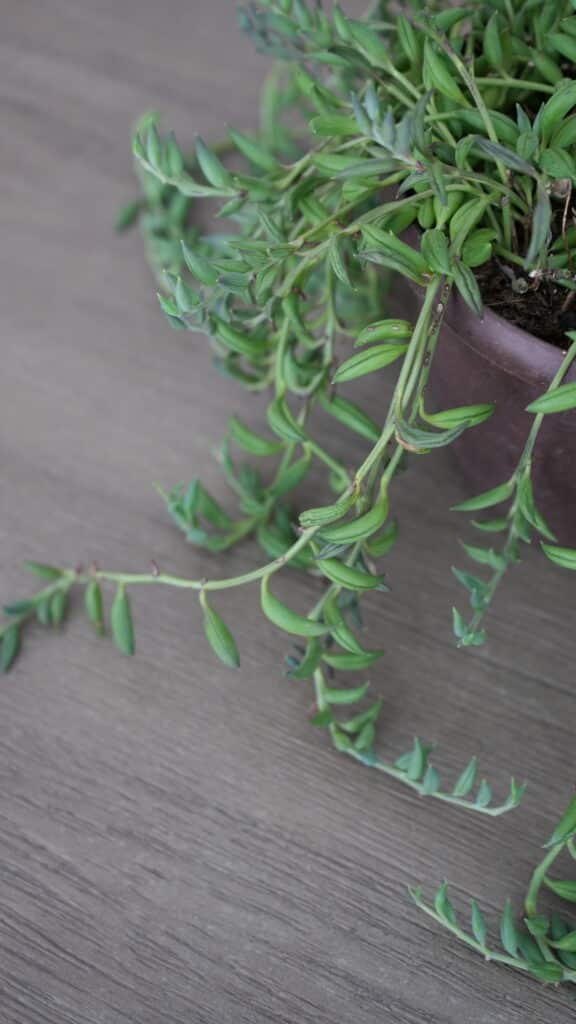
If you’re interested in making your own succulent soil, this DIY soil tutorial will help.
How to Water String of Bananas
This plant is a succulent which means it’s drought-tolerant and susceptible to root rot when overwatered. As a general rule of thumb, the soil should be allowed to go dry between waterings, especially when being grown indoors.
If being grown outdoors in warm temperatures, then be mindful that you’ll need to keep the soil moist, particularly on days that reach above 90 degrees.
When watering, make sure to water the soil, not the leaves. The soil is what needs moisture, not the vines. You’re going to water less in the winter months when the plant goes dormant and stops growing.
During the spring and summer, you’ll likely need to water at least once a week to several times a week.
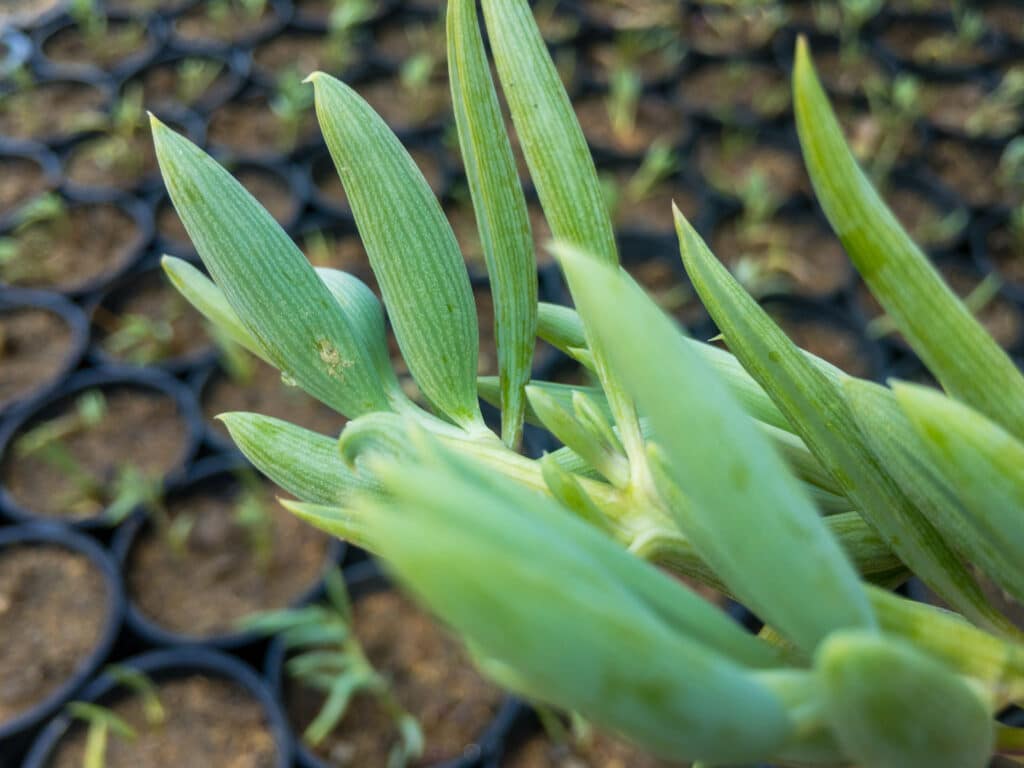
To ensure your hanging plant stays healthy, aim to check the soil once a week, on the same. This way, you’ll prevent problems such as underwatering and overwatering, too.
The best time to water is in the morning, especially if your succulent is being grown outdoors. This gives the soil plenty of time to retain moisture and send it up to the leaves through the stem before the heat sets in in the afternoon.
It’s important to know that young and new plants are less able to withstand long periods of drought as well a too much water. Older, larger plants are better equipped to tolerate underwatering.
String of bananas features plump, firm, and fleshy leaves when well-watered. The leaves on an overwatered plant will feel mushy and begin to appear yellow and translucent.
On the other end, an underwatered plant will have thinner leaves that being to wrinkle and shrivel up from lack of moisture in the soil. The ends of the strands will also appear brown and lifeless.
This is why it’s important to check the soil moisture every week.
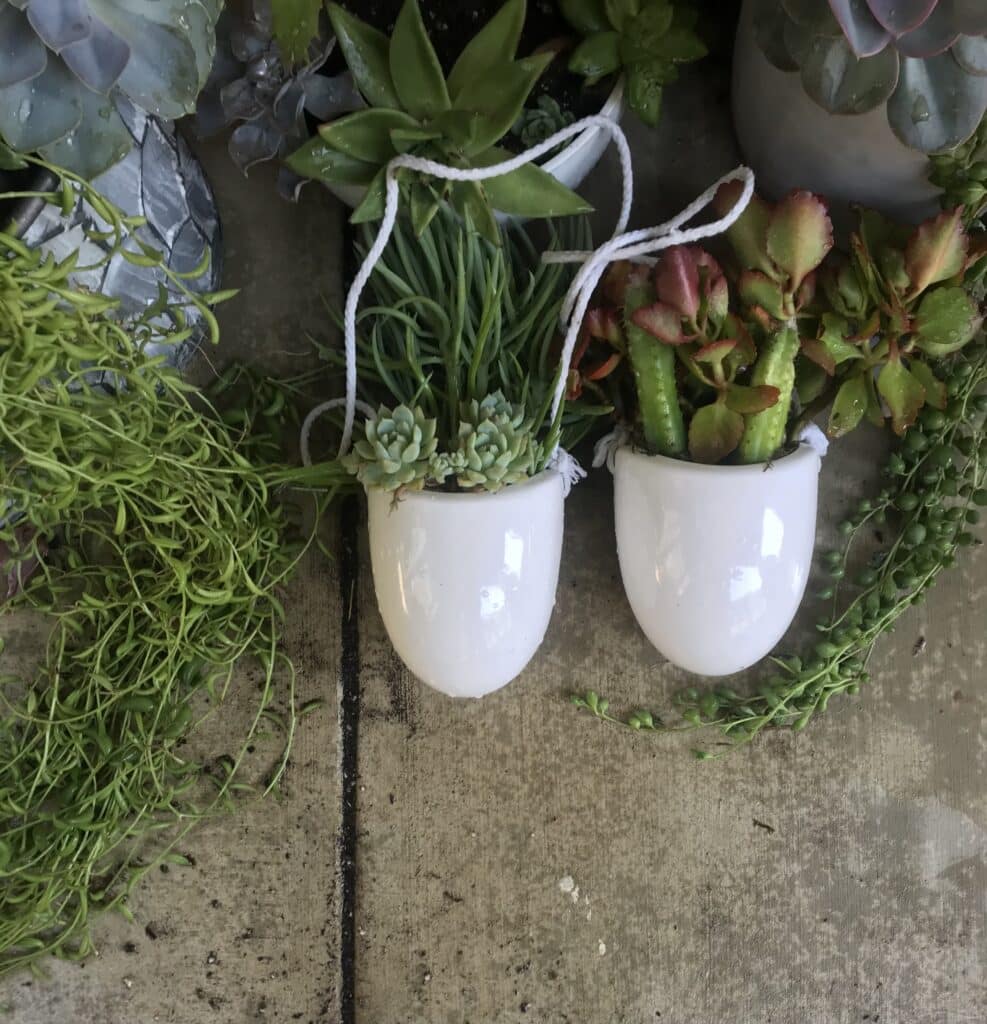
If the soil feels moist an inch deep into the pot, then wait a few more days before you check it again. Remember: string of bananas that are being grown indoors should be watered ONLY when the soil in the entire pot has gone completely dry.
This is what will help prevent root rot from overwatering, which indoor succulents are highly susceptible to.
When being grown outdoors, you can water more regularly to keep the soil moist, though not water-logged. It’s not critical to let the soil go completely dry
Temperature and Humidity Needs
The reason string of bananas performs so well inside our homes is because it’s native to South Africa where the weather remains dry and warm, much like the inside of most households.
One thing to look out for, however, is the plant’s proximity to heat and air conditioning vents. Being close to a heating vent can quickly dry out the soil and lower the humidity level around houseplants.
Try to place your plant away from heating vents to avoid potential problems in the future.
Houseplants don’t take well to sudden changes in the environment, and that includes extreme temperatures and cold drafts from nearby windows.
You can place the plant near a window or glass door during warm weather, but if your climate zone is experiencing freezing temperatures, it’s best to keep the plant several feet away.
Fertilizing String of Bananas
Like other succulents, string of bananas does not need to need to be fertilized but it can benefit from a light dose of fertilizer during the spring and summer months when it’s in its growing season.
Adding fertilizer to the soil will help encourage new growth and new roots as long as the plant gets enough sunlight each day.
Applying fertilizer to a plant that doesn’t get much sun will force the plant to grow leggy, with large spaces of stem between the leaves.
The best and most gentle fertilizer for string of bananas is liquid kelp or fish emulsion.
To fertilize, make sure to first water the soil so that it becomes moist before adding the fertilizer.
You can add the liquid kelp into a watering can filled with water. Mix then water the soil with the liquid kelp and water solution. Do this once a month or just once during the growing season.
Repotting String of Bananas
String of Bananas does not need to be repotted regularly, thankfully. Once every few years when the root system has outgrown its current pot is fine.
This trailing succulent does not mind being root bound but if the roots are completely visible when you take the plant out of its pot, it’s time to repot. This means the roots need more soil and potting mix.
Whenever you repot a houseplant, it’s important to pay attention to pot size. You never want to move a small plant into a much larger pot because this will shock the roots. You want to go up only one or two sizes up.
The best time to repot is during spring and summer. Be very gentle with the strands as they could break off easily.
Luckily, the banana-shaped leaves are less prone to falling off at the slightest touch, like the String of Pearls plant or burrito sedum succulent.
After repotting, do not immediately water the soil. Wait a few days to water so that any broken roots have time to callus over before taking in any water, which could lead to root rot.
Dealing with Pests
Pests aren’t a huge problem for succulent growers, but you might deal with them from time to time, especially if you overwater.
Mealybugs, spider mites, and aphids are common pests that plague succulents. Usually, though, a good mixture of water and rubbing alcohol and eradicate the problem before it becomes out of hand.
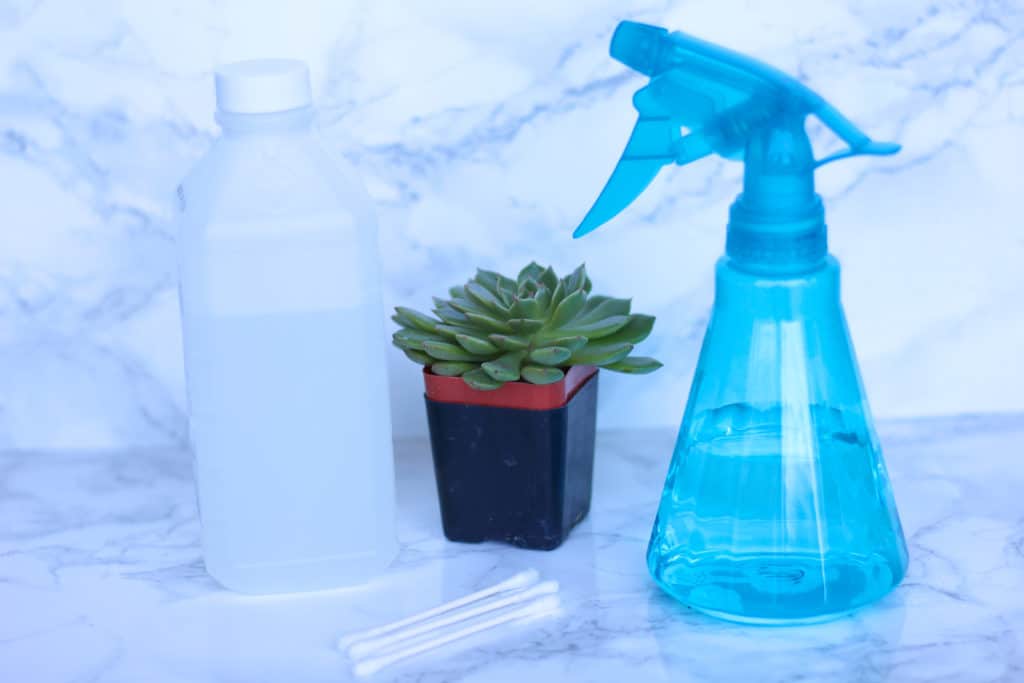
If you see evidence of pests like white mounds in the case of mealybugs, simply mix water and rubbing alcohol in a spray bottle and mist the leaves and stem.
See the photo below for what mealybugs look like the white-colored bugs stay between the lines and along the stem. You’ll often see ants along with them, too, when you have an infestation.
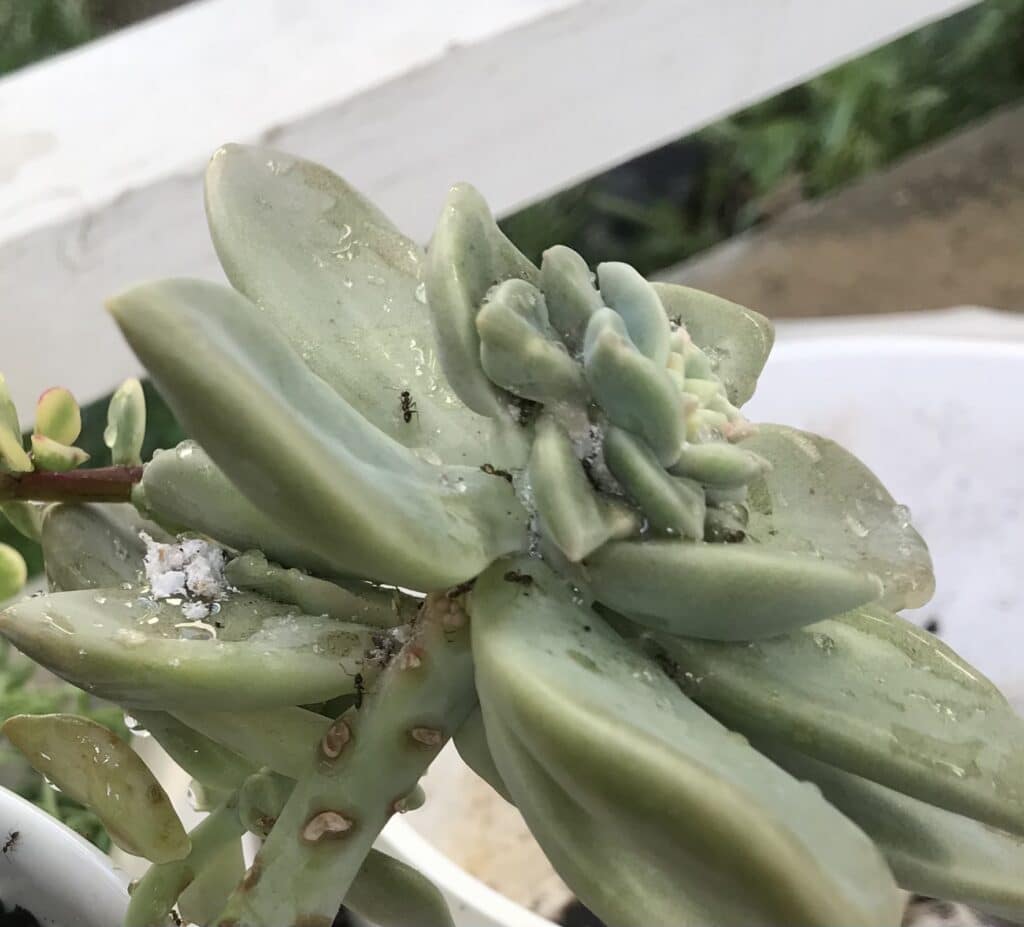
You can also drench the water in this solution, which is a better way to rid the soil of the pests entirely, especially if you see more than two mounds of mealybugs.
LOOKING FOR MORE SUCCULENT CARE INFORMATION?
I have you covered with both succulent care and succulent crafts content! Head to the following posts for more help and inspiration:
How to Keep Air Plants Alive: Easy Care Tips for Beginners
Pothos Plant Propagation: How to Grow Pothos Cuttings
How to Care for a Pothos Plant
How to Care for a Jade Plant
Why Are My Succulent Leaves Shriveling?
Best Succulent for Full Sun
The Best Succulents Plants for Indoors

